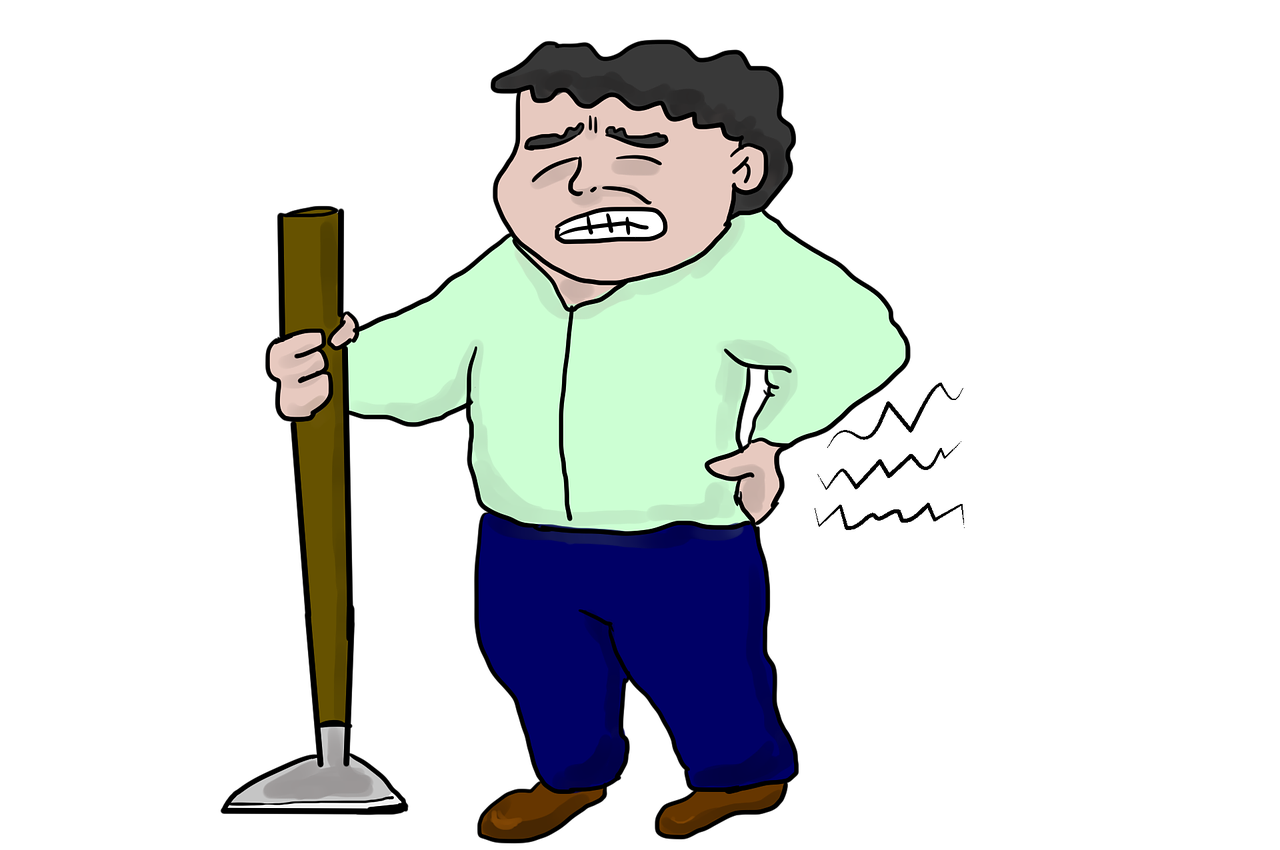Health
Back Pain Prevention in Construction: 10 Tips for Success

If you work in the construction industry or a related field, you’re especially vulnerable to back pain and complicated lower back issues. The good news is, most back injuries and pain are preventable with the right habits and strategies.
What are the most important steps to take?
Why Back Injuries Are So Important to Prevent
First, let’s address why back injuries are so important to prevent. Back injuries are among the most common injuries on construction job-sites, and they can be devastating to a person’s physical health and sense of wellbeing. After a single back injury, a person can struggle with back pain for the rest of their lives – and interfere with their ability to work in the future.
Because of this, and because back injuries can also be difficult to treat, back injuries are disproportionately expensive for construction companies and insurance companies.
Also, most back injuries can be prevented with simple policies and procedures – so there are few, if any costs associated with back injury and back pain prevention.
Tips for Back Pain Prevention
If you’re an employee in the construction industry, you should follow these tips for back pain prevention. If you’re an employer in the construction industry, you should ensure that all of your employees follow these tips.
- Avoid lifting whenever possible. Back injuries are most commonly attributable to lifting something that’s too heavy, or lifting something the wrong way. Accordingly, you can prevent many back injuries by avoiding the lifting action altogether. Is there an alternative way you can move heavy items? Is there a way to avoid this work entirely?
- Store materials at a convenient height. If and when you do need to move things, store those materials at a convenient, accessible height. Ideally, these items will be available at or above waist height, making it easier and more intuitive for employees to lift these items properly.
- Lift with your legs. “Lift with your legs” is a common instruction, and an essential one to follow. But what does that really mean? Basically, it means bending your legs and using your legs as a main source of force when attempting to pick something up; the alternative, bending over and rounding your back, can set you up for a herniated disc or a similar injury.
- Avoid twisting your spine. Similarly, you should avoid twisting your spine when lifting or carrying something, as this can render you prone to injury as well. Also, when carrying something, keep it close to the center of your body.
- Utilize extra equipment. Carts, dollies, forklifts, and hoists are just a few of the tools and resources that can assist you in lifting and moving things. Utilize these pieces of equipment whenever you have the opportunity.
- Use proper posture when sitting or standing. Even if you’re not exerting yourself, sitting or standing with poor posture can increase your risk of a back injury. Keep your spine straight and your shoulders back at all times.
- Use major muscle groups to lift. When lifting things, try to engage your biggest muscle groups, rather than relying on areas of your body with limited to no muscle mass. For example, the latissimus dorsi (lat) muscles in your upper back that help you extend and rotate your arms are typically bigger, stronger, and more resilient than the smaller, thinner muscles in your lower back.
- Get help. Instead of lifting something heavy by yourself, consider getting help. There’s no shame in team lifting something if it means both people are less likely to suffer a back injury.
- Take breaks (and rotate crew members). Don’t lift more frequently than necessary. If you’ve been lifting and carrying things to the point of being fatigued, take a break and consider rotating out with another team member. Share responsibilities associated with back injuries with the rest of the team.
- Rest and recover when necessary. If you do experience a back injury or suffer from any back pain, take the time to rest and recover. If you push yourself too far when you’re already injured, you could end up making your injury much worse. Get the medical help you need and refrain from engaging in heavy lifting responsibilities until you’re 100 percent better.
Bonus Tip: Hold Others Accountable
Here’s one more important tip for you: hold other people accountable to following these standards. There’s much you can do to prevent injuries in your own approach to work, but part of maintaining a safe job-site is helping other people stay safe as well. Don’t be afraid to call someone out and educate them when you notice them lifting something incorrectly.
Simple, inexpensive, proactive efforts are usually more than enough to prevent back injuries. Don’t let lax standards at your construction job-site harm your best workers.
Health
Addressing Common Myths About Vitamins and Supplements by Amanda Tirado

The wellness industry is filled with advice about vitamins and supplements, but not all of it is accurate. Many people rely on supplements for better health, but misunderstandings about how they work can lead to wasted money or even potential harm. Amanda Lorena Tirado, founder of Xmy, is passionate about educating people on making smarter supplement choices. Her company focuses on high-quality, effective products while also giving back to the community through charitable initiatives. Let’s break down some of the most common myths about vitamins and supplements so you can make informed decisions.
One of the biggest myths is that all supplements work the same way, regardless of how they are taken. Many don’t realize that traditional pills and capsules have to pass through the digestive system, where stomach acid and enzymes break them down. This can significantly reduce the amount of nutrients your body actually absorbs.
In contrast, oral strips and liquid supplements enter the bloodstream more quickly, making them more effective. For example, vitamin B12 is often poorly absorbed in pill form but is much more bioavailable in liquid or sublingual forms. Choosing the right delivery method is just as important as picking the right supplement.
Another misconception is that supplements can replace a healthy diet. Many people assume taking a daily multivitamin covers all their nutritional needs, but that’s not how the body works. Supplements are designed to support a good diet, not replace it. Whole foods provide more than just vitamins, they contain fiber, antioxidants, and other compounds that work together to benefit your health.
For example, an orange does not just offer vitamin C. It also provides fiber, flavonoids, and other nutrients that enhance absorption and support overall health. Research has shown that people who get their nutrients from food rather than supplements tend to have better long-term health outcomes. So while supplements can help fill gaps in your diet, they should not be your primary source of nutrients.
Many people also assume that if a supplement is labeled as “natural,” it must be better and safer. But that’s not necessarily true. The term “natural” is often used as a marketing tool rather than an indicator of quality or safety.
Some natural ingredients can be harmful, especially in high doses or when mixed with certain medications. On the flip side, some synthetic nutrients are actually more stable and easier for the body to absorb. The key is to choose well-researched, high-quality supplements from reputable brands rather than relying on misleading labels.
Another dangerous myth is that taking more vitamins means better health. Some believe that if a little is good, a lot must be even better, but that’s not always the case.
Certain vitamins, especially fat-soluble ones like A, D, E, and K, can build up in the body and become toxic if taken in excessive amounts. Too much vitamin A, for example, can lead to liver damage, while excessive vitamin D can cause kidney problems. Even water-soluble vitamins like B-complex and C can cause side effects in very high doses, such as nerve issues or stomach discomfort. Moderation is key when it comes to supplementation.
At Xmy, the focus is not just on convenience, it’s about real impact. The company is committed to producing supplements that prioritize effectiveness and bioavailability. But their mission goes beyond selling products.
Misinformation about supplements is everywhere, but being informed is the best way to make smarter health choices. The way a supplement is absorbed matters as much as what’s in it. A balanced diet is still the foundation of good health, and more vitamins don’t always mean better results.
Xmy is changing the way people think about supplements. Amanda and her team believe that good health is not just about what you take, it’s about making informed choices and supporting brands that genuinely care. Choosing the right supplements means choosing a brand that stands for something bigger. With Xmy, you are not just improving your health, you are supporting a company that is making a real difference.
-

 Tech5 years ago
Tech5 years agoEffuel Reviews (2021) – Effuel ECO OBD2 Saves Fuel, and Reduce Gas Cost? Effuel Customer Reviews
-

 Tech6 years ago
Tech6 years agoBosch Power Tools India Launches ‘Cordless Matlab Bosch’ Campaign to Demonstrate the Power of Cordless
-

 Lifestyle6 years ago
Lifestyle6 years agoCatholic Cases App brings Church’s Moral Teachings to Androids and iPhones
-

 Lifestyle5 years ago
Lifestyle5 years agoEast Side Hype x Billionaire Boys Club. Hottest New Streetwear Releases in Utah.
-

 Tech7 years ago
Tech7 years agoCloud Buyers & Investors to Profit in the Future
-

 Lifestyle5 years ago
Lifestyle5 years agoThe Midas of Cosmetic Dermatology: Dr. Simon Ourian
-

 Health7 years ago
Health7 years agoCBDistillery Review: Is it a scam?
-

 Entertainment6 years ago
Entertainment6 years agoAvengers Endgame now Available on 123Movies for Download & Streaming for Free
